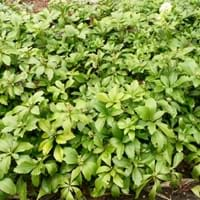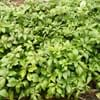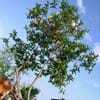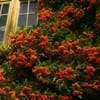Life Span
Perennial
Annual and Perennial
Type
Broadleaf Evergreen
Bulb or Corm or Tuber
Origin
China, Japan
Central America, South America
Types
Not available
Vine, Flowering plant
Number of Varieties
Not Available
Habitat
Banks, Slopes, Temperate Regions
All sorts of environments, Along Railroads, Banks, Moist Ditches, Roadsides, rocky banks of streams
USDA Hardiness Zone
4-8
10-13
AHS Heat Zone
Not Available
12-1
Habit
Prostrate/Trailing
Vining/Climbing
Minimum Height
Not Available
Minimum Width
Not Available
Flower Color
White
Purple, Rose
Flower Color Modifier
Bicolor
Bicolor
Fruit Color
Not Available
Not Available
Leaf Color in Spring
Dark Green
Purple, Dark Green, Black
Leaf Color in Summer
Dark Green
Light Green
Leaf Color in Fall
Dark Green
Several shades of Green
Leaf Color in Winter
Dark Green
Light Green
Leaf Shape
Lanceolate
Acicular
Plant Season
Spring, Summer, Fall, Winter
Spring, Summer, Fall, Winter
Sunlight
Partial shade, Full Shade
Full Sun, Partial Sun
Growth Rate
Medium
Very Fast
Type of Soil
Loam
Clay, Loam, Sand
The pH of Soil
Acidic, Neutral
Acidic, Neutral, Alkaline
Soil Drainage
Well drained
Well drained
Bloom Time
Late Spring, Early Summer
Late Spring, Early Summer, Summer, Late Summer, Early Fall, Fall, Late Fall
Tolerances
Drought, Variety of soil types
Drought
Where to Plant?
Ground
Container, Ground
How to Plant?
Divison, Seedlings, Softwood cuttings, Stem Cutting
Cuttings, Leaf Cutting, Tuber propagation
Plant Maintenance
Low
Medium
Watering Requirements
Requires watering in the growing season
Keep the Soil well drained, Needs very little water
In Summer
Lots of watering
Lots of watering
In Spring
Moderate
Moderate
In Winter
Average Water
Average Water
Soil pH
Acidic, Neutral
Acidic, Neutral, Alkaline
Soil Type
Loam
Clay, Loam, Sand
Soil Drainage Capacity
Well drained
Well drained
Sun Exposure
Partial shade, Full Shade
Full Sun, Partial Sun
Pruning
Remove damaged leaves, Remove dead branches, Remove dead leaves
Remove damaged leaves, Remove dead branches, Remove dead leaves
Fertilizers
All-Purpose Liquid Fertilizer
All-Purpose Liquid Fertilizer
Pests and Diseases
Alternaria leaf blight, Canker, Root knot nematode
Red blotch
Plant Tolerance
Drought, Variety of soil types
Drought
Flowers
Insignificant
Showy
Flower Petal Number
Single
Single
Foliage Texture
Medium
Coarse
Foliage Sheen
Glossy
Matte
Attracts
Bees
Aphids, Beetles, Cutworms, Insects, Mites, Whiteflies
Allergy
Not Available
Abdominal pain, allergic reaction, Nausea, Skin rash, Twitching of face
Aesthetic Uses
Cottage Garden, Ground Cover, Landscape Designing, Showy Purposes
Not Used For Aesthetic Purpose
Beauty Benefits
Not Available
Not Available
Environmental Uses
Air purification
Air purification
Medicinal Uses
Not Available
Cures constipation, Fiber, Low calories, lowering blood pressure, Potassium, ß-carotene, Vitamin A, Vitamin C
Part of Plant Used
Fruits
Leaves, Root, Shoots, Stem, Tuber
Other Uses
Container, Culinary use, Florist trade and landscaping, Grown for shade
Starch, Used As Food, Used as Ornamental plant
Used As Indoor Plant
No
Sometimes
Used As Outdoor Plant
Yes
Yes
Garden Design
Groundcover
Container, Edible, Groundcover, Hanging Basket, Herb / Vegetable, Mixed Border, Rock Garden / Wall, Vine
Botanical Name
Pachysandra terminalis
IPOMOEA batatas 'Blackie'
Common Name
Pachysandra, Japanese pachysandra, carpet box, Japanese spurge
Blackie Sweet Potato Vine, Sweet Potato Vine
In Hindi
जापानी रसदार पौधा
शकरकन्द
In German
japanische Spurge
Süßkartoffel
In French
Euphorbe japonaise
Patate douce
In Spanish
Euphorbia japonesa
Ipomoea batatas
In Greek
Ιαπωνικά Ευφόρβιο
Sweet potato
In Portuguese
Spurge japonês
Batata-doce
In Polish
japoński Wilczomlecz
Wilec ziemniaczany
In Latin
Spurge Italica
Ipomoea batatas
Phylum
Magnoliophyta
Tracheophyta
Class
Magnoliopsida
Magnoliopsida
Order
Euphorbiales
Solanales
Family
Buxaceae
Convolvulaceae
Genus
Pachysandra
Ipomoea
Clade
Angiosperms, Eudicots
Angiosperms, Asterids, Eudicots
Tribe
Not Available
Not Available
Subfamily
Not Available
Not Available
Number of Species
Not Available
Importance of Japanese Spurge and Sweet Potato Vine
Want to have the most appropriate plant for your garden? You might want to know the importance of Japanese Spurge and Sweet Potato Vine. Basically, these two plants vary in many aspects. Compare Japanese Spurge and Sweet Potato Vine as they differ in many characteristics such as their life, care, benefits, facts, etc. Every gardener must at least have the slightest clue about the plants he wants to plant in his garden. Compare their benefits, which differ in many ways like facts and uses. The medicinal use of Japanese Spurge is Not Available whereas of Sweet Potato Vine is Cures constipation, Fiber, Low calories, lowering blood pressure, Potassium, ß-carotene, Vitamin A and Vitamin C. Japanese Spurge has beauty benefits as follows: Not Available while Sweet Potato Vine has beauty benefits as follows: Not Available.
Compare Facts of Japanese Spurge vs Sweet Potato Vine
How to choose the best garden plant for your garden depending upon its facts? Here garden plant comparison will help you to solve this query. Compare the facts of Japanese Spurge vs Sweet Potato Vine and know which one to choose. As garden plants have benefits and other uses, allergy is also a major drawback of plants for some people. Allergic reactions of Japanese Spurge are Not Available whereas of Sweet Potato Vine have Abdominal pain, allergic reaction, Nausea, Skin rash and Twitching of face respectively. Having a fruit bearing plant in your garden can be a plus point of your garden. Japanese Spurge has no showy fruits and Sweet Potato Vine has no showy fruits. Also Japanese Spurge is not flowering and Sweet Potato Vine is not flowering . You can compare Japanese Spurge and Sweet Potato Vine facts and facts of other plants too.





